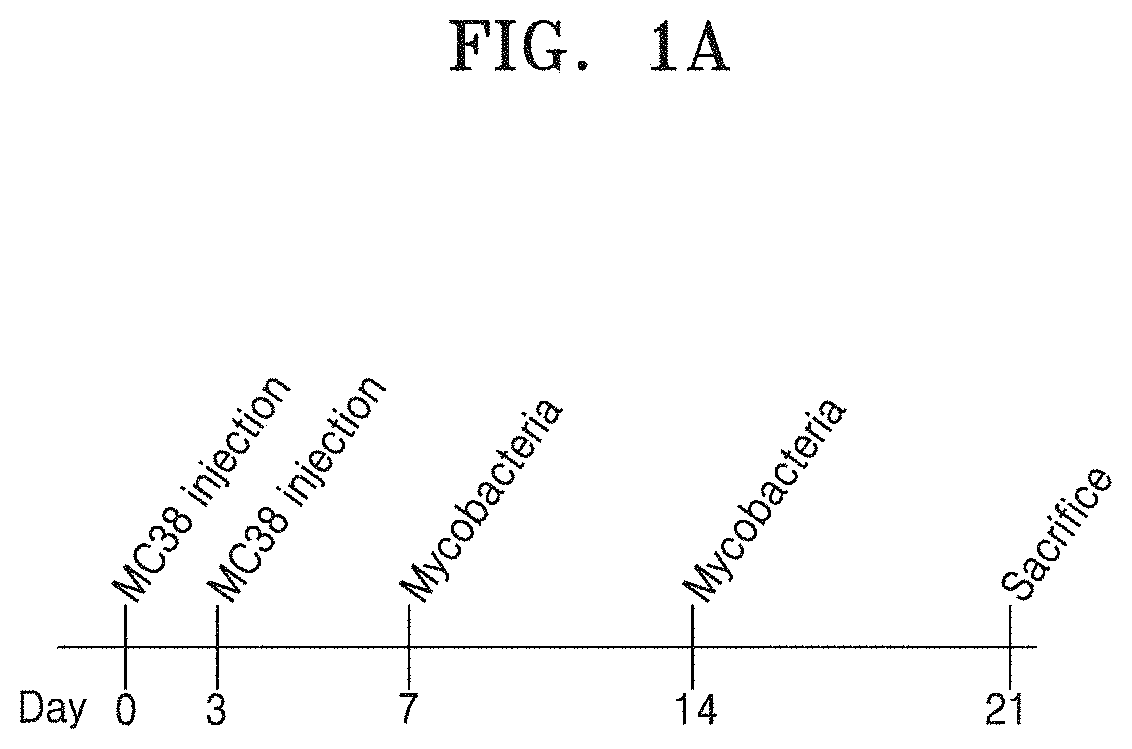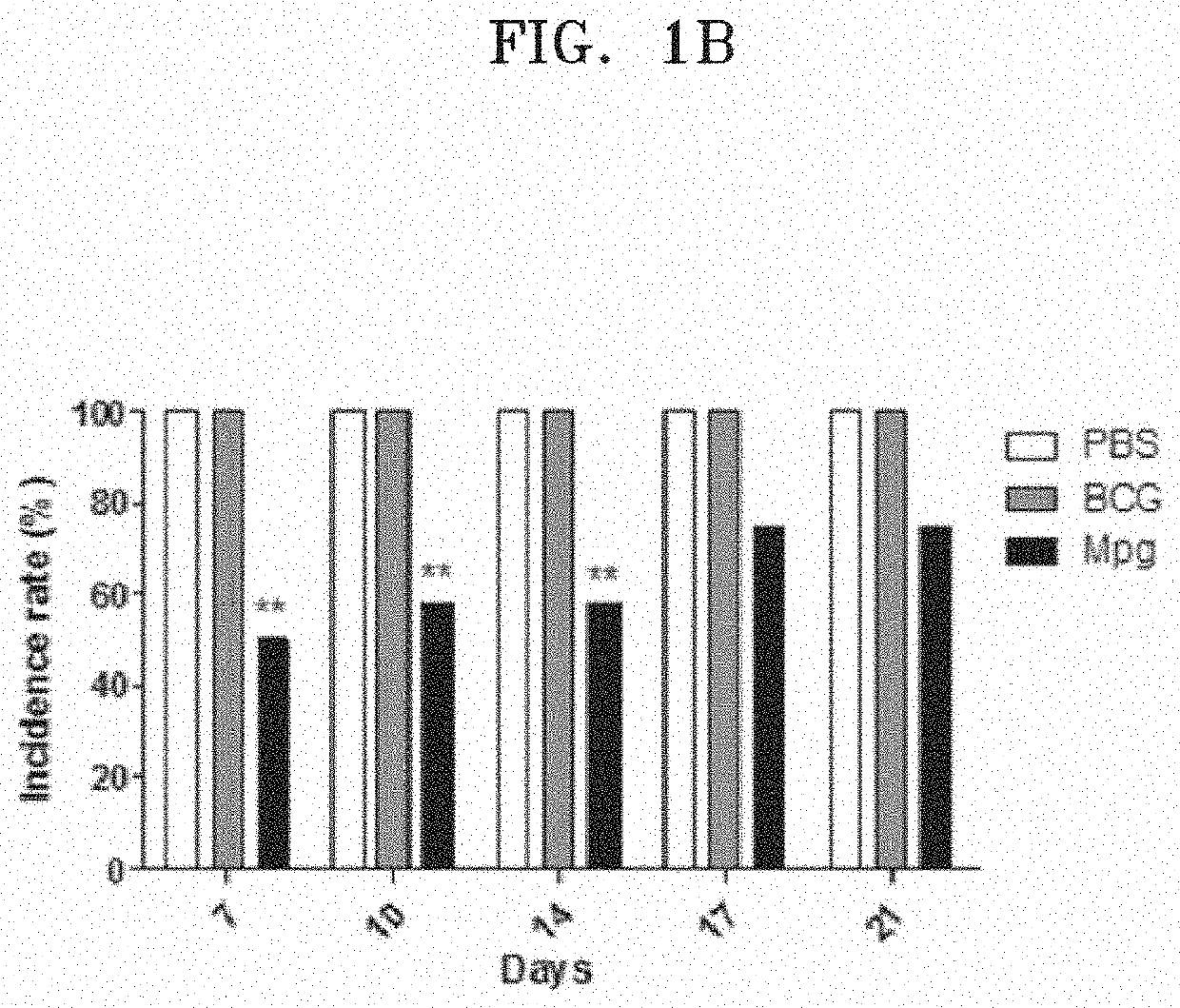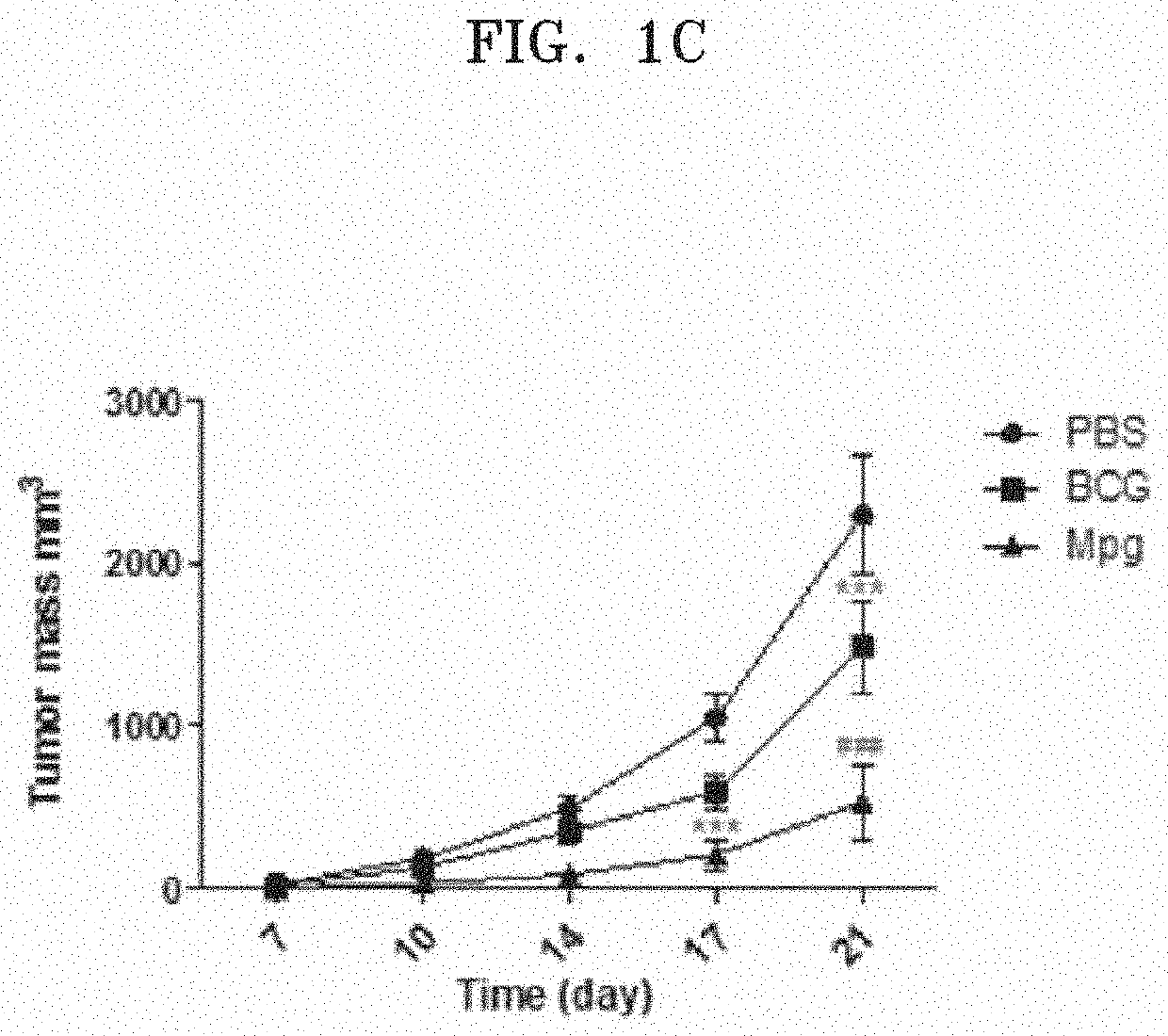Use of mycobacterium paragordonae for cancer immunotherapy
a technology of immunotherapy and mycobacterium paragordonae, which is applied in the direction of bacteria-based processes, antibody medical ingredients, bacteria material medical ingredients, etc., can solve the problems of many side effects, limited surgical operation, and the known serious side effects of immunotherapy as another anti-cancer therapy
- Summary
- Abstract
- Description
- Claims
- Application Information
AI Technical Summary
Benefits of technology
Problems solved by technology
Method used
Image
Examples
reference example 1
Cell Line Culture
[0077]The murine colorectal cancer cell line MC38 and the human breast cancer cell line MCF-7 were cultured using DMEM (Hyclon) culture media, and the murine macrophage cell line J774.1A (American Type Culture Collection, Manassa, Va., USA), the murine dendritic cells line DC2.4, and human liver cancer cell line Huh7, lung cancer cell line A549 and bladder cancer cell line Mbt-2 were cultured using RPM11640 (Hyclon) culture media. 10% fetal bovine serum (Invitrogen, USA), 2 mmol / ml of L-glutamine, 100 ug / ml of penicillin and 100 units / ml of streptomycin were added to the two culture media and cultured at 37° C. in a 5% CO2 incubator.
reference example 2
Manufacture of Tumor Animal Model and Tumor Size Assay
[0078]Tumor formation was induced by injecting 1×106 / 100 μl of colorectal cancer MC38 cell lines to right hind legs of 7-week old C57BL / 6 female mice. 1×108 / 100 μl of thermally inactivated Mycobacterium paragordonae was subcutaneously injected into the vicinity of the lymph node three times at an interval of three days. To comparatively investigate the anti-cancer effects, Mycobacterium bovis BCG currently being used for immunotherapy was used as a positive control, and PBS was used as a negative control. In addition, in order to confirm the combination administration effect, Cisplatin (50 μg / kg) was intraperitoneally administered. The sizes of formed tumors were measured twice a week, and tumor size measurements were converted to cubic millimeter tumor volumes using the formula below:
[0079]width2×length×0.52. After completion of the experiment, tumors were isolated from the mice, and some of the isolated tumors were fixed in 4% ...
reference example 3
TUNEL Assay
[0080]To assay tumor cell apoptosis, DNA fragments were detected by terminal deoxynucleotidyl transferase-mediated dUTP nick-end labeling (TUNEL) assay. Fragmented tumor tissues were deparaffinized in xylene, and dead cells were stained using an ApopTag Peroxidase In Situ Apoptosis Detection Kit (Millipore) according to manufacturers instructions. Stained apoptotic cells were evaluated by confocal A1 microscope (NIKON, 136 Japan), and fluorescence was assayed using imaging software (NIS Elements Viewer 137 program).
PUM
| Property | Measurement | Unit |
|---|---|---|
| thickness | aaaaa | aaaaa |
| size | aaaaa | aaaaa |
| time | aaaaa | aaaaa |
Abstract
Description
Claims
Application Information
 Login to View More
Login to View More - R&D
- Intellectual Property
- Life Sciences
- Materials
- Tech Scout
- Unparalleled Data Quality
- Higher Quality Content
- 60% Fewer Hallucinations
Browse by: Latest US Patents, China's latest patents, Technical Efficacy Thesaurus, Application Domain, Technology Topic, Popular Technical Reports.
© 2025 PatSnap. All rights reserved.Legal|Privacy policy|Modern Slavery Act Transparency Statement|Sitemap|About US| Contact US: help@patsnap.com



